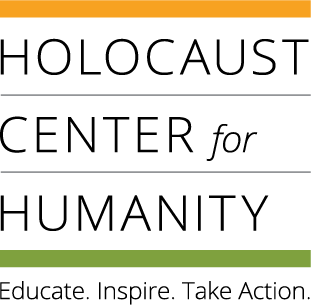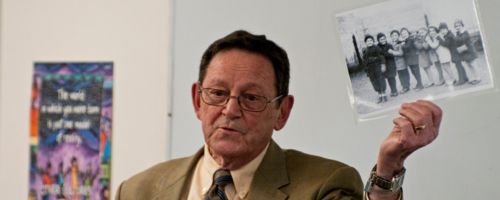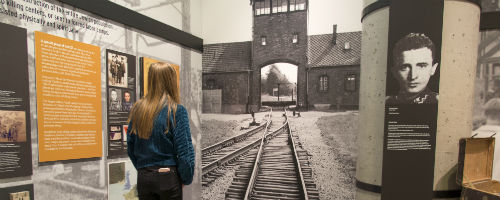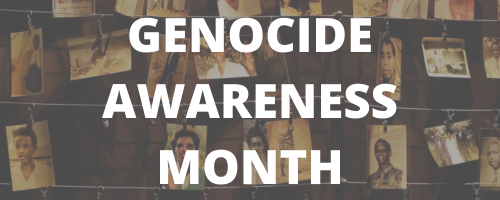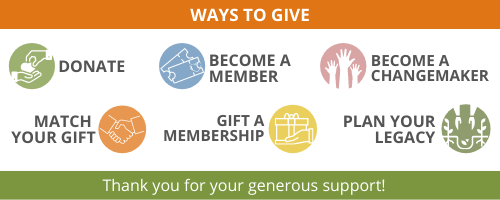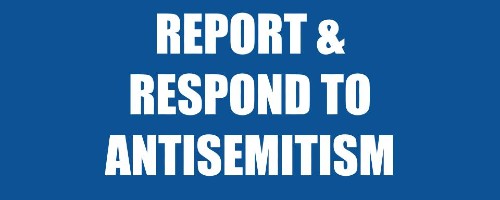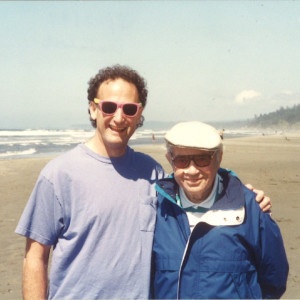
 Tom Heller, MD, is the son of Holocaust survivors.
Tom Heller, MD, is the son of Holocaust survivors.
Tom’s father Paul was born in Chomutov, Czechoslovakia (now Czech Republic) in 1914. As a young student, Paul was the only Jewish student in his class. He attended Charles University and medical school in Prague and graduated in 1938. In March 1939, Nazi Germany invaded and annexed Czechoslovakia. Dr. Heller was poised to leave the country for England, but on the first day of WWII – September 1 – was arrested by the Gestapo for anti-Nazi activity connected to a university group.
He was detained as a political prisoner, sent to Dachau and Buchenwald concentration camps, where he spent 3 ½ years doing hard labor, and then to Auschwitz in 1943. Exploiting his skills as a physician, Dr. Heller was sent by the Nazis to work at a clinic in sub-camp Jawarzno. Dr. Heller was a part of a death march to Gross-Rosen concentration camp before being transported back to Buchenwald in February 1945. Liberation finally came that April. World-famous reporter Edward R. Murrow visited Buchenwald on April 12, and in a live broadcast several days later mentioned Dr. Heller, thus notifying his friends and family that he was alive.
Tom’s mother, Liese Florsheim, was from Germany and had met Paul at Charles University in the 1930s. She was able to escape to the United States in 1938, where she earned a Master’s degree in Social Work. Liese was at the dock to meet Paul when he arrived in New York in 1946 and they were soon married. Dr. Heller became an internationally recognized medical researcher in blood diseases while raising Tom and daughter, Caroline, with Liese.
Tom also became a doctor, and worked for many years in Seattle in a community health center, and subsequently for the U.S. Centers for Disease Control, helping establish HIV treatment services in countries in Asia and Africa. Now retired, he chose to share his family story to help teach students and other audiences the dire consequences of prejudice and hate. Tom joined the Speakers Bureau in 2022. He has three grown children and lives with his wife in Seattle.
Image: Tom Heller with his father Paul in 1994.
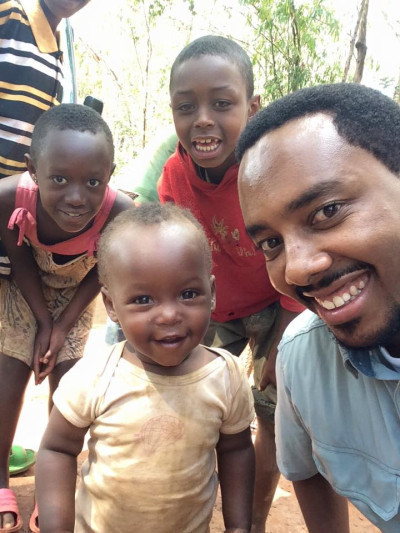
 In 1959, at a time of political unrest in Rwanda, Paul Karemera’s grandparents on both sides of his family left their homes in Rwanda and became refugees in neighboring Uganda.
In 1959, at a time of political unrest in Rwanda, Paul Karemera’s grandparents on both sides of his family left their homes in Rwanda and became refugees in neighboring Uganda.
They belonged to the Tutsi tribe – the group targeted in the Rwandan genocide. Throughout the 1960s through the early 1990s, tribal tensions flared back in Rwanda. Paul, his siblings, and parents remained refugees in Uganda.
As a young student, Paul was harassed and bullied as an outsider in Uganda, despite having been born there. When civil war and then genocide gripped Rwanda in 1990-1993, Paul’s father was active in transporting soldiers over the border of Uganda into Rwanda. These soldiers were part of the Rwandan Patriotic Front (RPF) that fought the genocide’s perpetrators and eventually took over the nation’s government.
At 16, shortly after the genocide against the Tutsi, Paul went back to Rwanda as a “returnee” to the country. Many friends and family had not survived. Paul’s next years involved attending an English language high school and settling into life in Rwanda, which was not easy for him. Nationwide, the genocide’s wounds were still raw. Gacaca courts for restorative
justice were instituted, but many Hutu perpetrators were never apprehended.
Paul has been an English interpreter and travel guide since 2000. In 2009 Paul and his wife, Shelly, founded a travel company, Intore Expeditions, in Rwanda. He now splits time between Seattle and Rwanda. Paul wants students and other audiences in the United States to learn more about Rwandan history and the genocide.
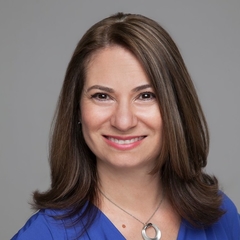
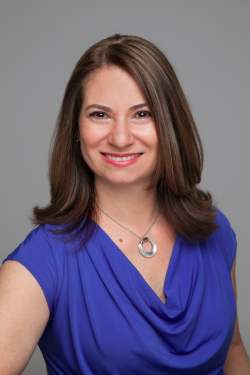 Daphna Robon tells the story of her parents, Imre Friedmann and Naomi Kraus.
Daphna Robon tells the story of her parents, Imre Friedmann and Naomi Kraus.
Imre was born in 1921 in Budapest, Hungary. Higher education was always his goal, but by the time he was ready for college in 1939, it was almost impossible for Jews to attend university in Hungary due to antisemitic restrictions. He finally enrolled in a university where he endured terrible discrimination from both students and professors. In 1944, Hungary was invaded by the Nazis, and Imre, like many Jewish men, was forced into hard labor. Luckily, he survived the labor camp and was later saved from being deported to a concentration camp by a very courageous person who impersonated a guard. After World War II, Imre escaped from Hungary to Vienna where he received his PhD in botany, zoology, and philosophy. He later immigrated to Israel where he became a professor at Hebrew University in Jerusalem.
Naomi was born in 1933 in Budapest, Hungary. She was hidden in Budapest during the Holocaust, first in a Swiss “safe house,” then with a family, using a false identity, thanks to courageous non-Jewish upstanders. After the war, Naomi was united with her mother in Budapest and finished high school. She then escaped Hungary to Vienna and later immigrated to Israel.
Naomi and Imre met in Israel on a blind date and married in 1953. Naomi, as the spouse of a faculty member, could enroll for free at Hebrew National University where she received a PhD in biochemistry. Later, the couple immigrated to the United States and became highly successful professors in their fields of science. Imre became quite well known in his field and is mentioned in Carl Sagan’s famous book Cosmos. He was featured in National Geographic and Discover magazine, amongst others.
Daphna was born in Israel and spent most of her childhood years in Houston, Texas. She was a lawyer and worked in insurance before changing careers to become a real estate broker, which she continues till today. Daphna lives in the Seattle area with her family and began sharing her family story as a Holocaust Center speaker in 2021. Her presentation is filled with primary source documents and video clip testimonials of her parents. Daphna has a strong passion for doing what she can to stop antisemitism and racism. Daphna dedicates her presentation to her Grandmother Gizi, one of her strongest supporters throughout her life, and the person who taught her what it means to be resilient.
